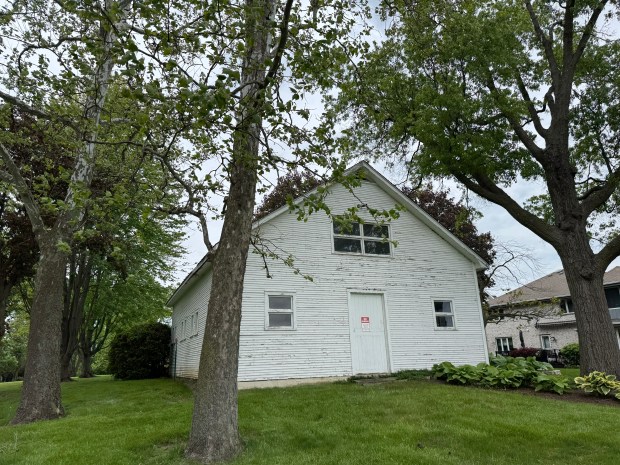A historic horse barn in Oak Brook that is owned by the Oak Brook Park District faces an uncertain future as community leaders determine whether to repurpose, relocate or demolish the structure.
What initially was a very local issue drew heightened regional awareness in early May when the nonprofit preservation group Landmarks Illinois placed the barn on its 10 most endangered historic places in Illinois for 2025.
Known as the Fordon horse barn, the structure on Saddle Brook Drive just south of 35th Street in Oak Brook was built around 1930 and has been used by the Park District for storage for over 25 years. Situated on a hill in Saddle Brook Park, the barn resembles an English barn built to accommodate hay, livestock and farm equipment, and it is the only remaining barn in Oak Brook with ties to town founder Paul Butler’s interest in the sport of polo, said Elizabeth Arts, the president of the Oak Brook Historical Society.
Recently, the Saddle Brook Community Association homeowners group became concerned with the condition of the barn and feared the barn’s condition would lead to its demolition. The group began discussions with the Park District about potentially leasing the barn site, said Alan Koren, the president of the Saddle Brook Community Association’s board.
“We were turned down, (so) we widened our preservation efforts to the entire Oak Brook community,” Koren said. “We realized that preserving the barn was more of an Oak Brook issue rather than a Saddle Brook issue alone. The barn represents the equestrian past of once-undeveloped Oak Brook.”
Laure Kosey, the Park District’s executive director, said her board and staff are not necessarily exploring demolishing the barn, despite some community concerns. The district held an open house at the barn on April 26 and is assessing survey feedback from that event, she said.
No one disputes that the barn needs work.
“At this time, the Fordon horse barn needs substantial maintenance to the roof, gutters (and) soffits, as well as the exterior needs to be repainted,” Kosey said. “The Park District is exploring all options, not just demolition. We are presently getting feedback for adaptive reuse such as the ability to occupy it, as well as moving it to another location. Another location has not been identified at this time.”
Kosey said that the Park District has been working with the village of Oak Brook, the Oak Brook Historical Society and the Saddle Brook Homeowners Association.
“Our next steps are to have an engineer and architect look at the structure to see if it is sound and of any historical significance,” Kosey said.
Oak Brook’s regional claims to fame include its upscale namesake outdoor shopping mall, Oakbrook Center, along with office buildings along the I-88 corridor and high-end subdivisions, many of which are gated.
But focusing on those elements gives short shrift to the village’s historic sites, said Arts, the Historical Society president. Three Oak Brook sites — Graue Mill, the Stuyvesant Peabody mansion and Butler School — are listed on the National Park Services’ National Register of Historic Places.
Several other Oak Brook locations — the Graue House, the Fuller House, St. John’s Community Church and York Tavern — also possess significant historic importance, she said.
“I don’t think the Oak Brook Park District realized the historic significance of the barn,” Arts said. “Once they took the time to listen to the residents and evaluate its history, they were enlightened and began looking into options for the community. The Oak Brook Historical Society is so pleased that the residents and Historical Society itself were given time to research all aspects of the horse barn.”
The barn takes its name from Jerome “Jerry” Fordon, a highly respected, postwar polo player who with his wife, Diana, owned the barn and a 60-acre farm in Oak Brook from the early 1940s until the 1970s.
“I went to Oak Brook 35 years ago because of the horses,” Fordon told the Tribune’s Dorothy Collin in 1976.
Bob Goldsborough is a freelance reporter for Pioneer Press.




